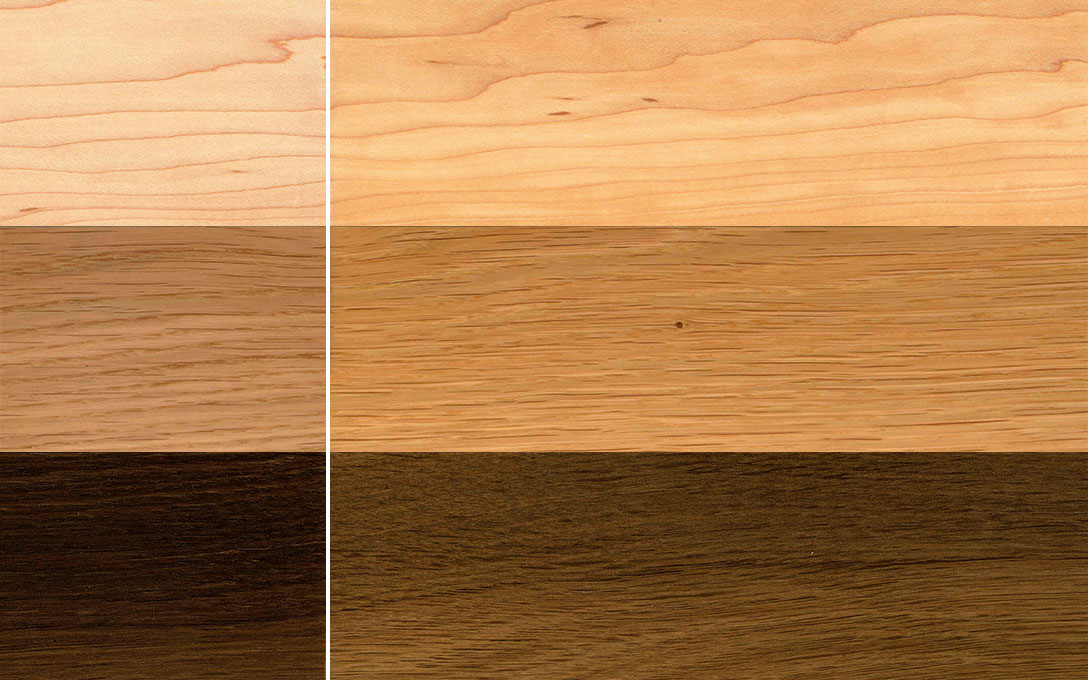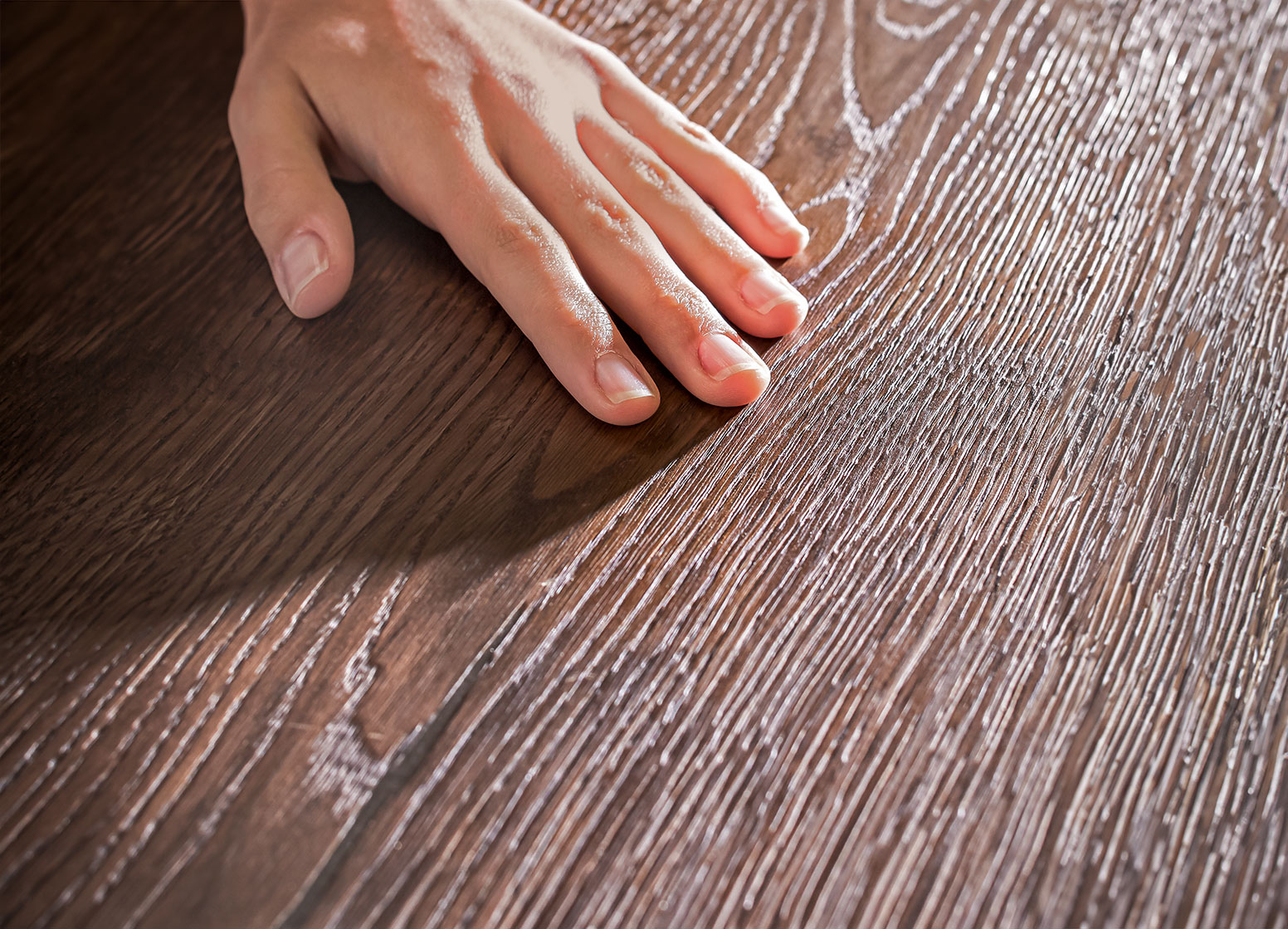Colour changes as a quality feature of parquet
Processing of wooden floors
Almost every type of wood changes over the course of time. This is due to one of the main constituents of wood - lignin. This substance is formed by every living tree, it prevents water from penetrating the cell wall and protects the cells from UV light. When processed, wood no longer produces this substance and so the colour changes. A natural wooden floor tends to change colour more than a varnished or stained floor.
Reactions of different types of wood
Each type of wood reacts differently to sunlight and at different speeds. The wood of a cherry tree, for example, becomes significantly darker in colour within a few weeks when exposed to direct light. Maple species become warmer in colour over time, and oak floors also take on a warmer, amber tone. Walnut, on the other hand, will gradually become lighter in colour. As a rule of thumb, you can remember that light-coloured wood tends to darken and naturally dark wood becomes paler. However, it is not only the intensity of the colour that changes, but also the basic tone.

Practical tips for the care and design of parquet floors
It is therefore advisable not to lay carpets or rugs in the window area in particular. Nobody lives in a room without furniture, so everyone is familiar with the problem of light-coloured spots when the sofa or a large rug is moved to the other corner of the room. As a general rule, you should therefore rearrange the furniture from time to time to avoid too great a difference between light and dark areas. Unfortunately, there is no quick fix for the light-coloured areas; over time, the lighter areas will darken and gradually blend in with their surroundings. In the long term, the only option is to sand down the floor to restore the previous lustre.
The JOKA partner craftsman knows what is possible in each specific case.
